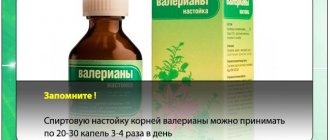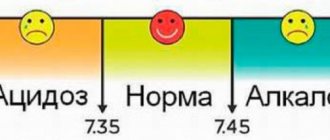19.06.2017
Last modified: July 23, 2021 at 01:11 am
If jumps in blood pressure become frequent and are accompanied by increased anxiety, nervous excitement and anxiety have increased. If you feel that the heart muscle is working hard, your face turns purple, and green spots appear in your eyes, this means that vascular spasm processes are occurring in the body and the resistance of the vascular walls to blood flow increases. This pathology is called hypertension. Is it possible to soar your legs with high blood pressure and how to properly prepare for the procedure - we will describe in this article.
The effect of hot foot baths on the body
Is it possible to soar your legs if you have hypertension? Need to! It has been known since ancient times that hot foot baths can reduce high blood pressure. Due to its effectiveness, this folk method of combating hypertension is nicknamed “first aid.”
Steam foot baths promote the following changes in the cardiovascular system:
- there is a decrease in the frequency of contractions of the heart muscle;
- the rest period of the heart muscle increases;
- blood flow in the vessels improves;
- the return of blood to the right side of the heart muscle is normalized;
- the amount of blood pushed by the left ventricle increases;
- the resistance of the vascular walls decreases;
- blood supply to organs such as the kidneys, liver and brain is normalized.
In addition to the effect on the cardiovascular system, steam foot baths help strengthen the immune system, since biologically active points that activate the normal functioning of internal organs are located on the feet. Hot water also activates the endocrine glands, which prevents diabetes. Thanks to improved blood circulation, there is an improvement in the condition of the skin.
Ear congestion
Fungus
Allergy
24873 04 February
IMPORTANT!
The information in this section cannot be used for self-diagnosis and self-treatment.
In case of pain or other exacerbation of the disease, diagnostic tests should be prescribed only by the attending physician. To make a diagnosis and properly prescribe treatment, you should contact your doctor. Ear congestion: causes, diagnosis and treatment methods.
Definition
Congestion in the ear or ears occurs as a result of a violation of sound perception and is characterized by various sensations, which may include deafness, a feeling of squeezing and heaviness, and the sound of one’s own voice being too strong. Ear congestion, regardless of the causes of its occurrence, is difficult for the patient to tolerate and, as a rule, requires the help of a specialist.
Types of ear congestion
Blockage in one or both ears may be accompanied by pain, tingling, noise or ringing in the ears, and dizziness. In some cases, congestion disappears after swallowing.
A dangerous symptom is ear congestion accompanied by fever, headache, discharge from the ear (purulent or bloody), and foreign body sensation.
Ear congestion does not always indicate a pathological process.
This condition can be caused by water getting into the ear, pressure changes
during air travel or diving to depth.
Sometimes too strong and incorrect blowing of the
nose from two nasal passages at the same time leads to a blocked ear (ears), which is associated with an increase in pressure in the middle chamber of the ear due to a sharp intake of air from the Eustachian tube.
Taking certain medications
(antibiotics, psychotropic substances) has a toxic effect on the ear, causing the development of congestion and hearing loss.
Diseases that can cause ear congestion.
Earwax
blocking the ear canal. Attempting to remove earwax yourself using improvised objects significantly increases the likelihood of pushing the plug deeper into the ear and sticking to the eardrum (this increases the risk of injury to the eardrum, which leads to complete or partial hearing loss). In these cases, the condition of congestion in the ears is accompanied by excruciating pain, noise, dizziness and nausea.
Mycotic, or fungal, infection of the external auditory canal
. Infection with fungi can be complicated by narrowing or blockage of the ear canal with a feeling of fullness in the ears. The spread of fungi in the ear is aggravated by hearing aids, in-ear headphones, and inflammatory diseases of the ear. The main signs of the disease are itching, ear congestion and resulting hearing loss, and increased sound of one’s own voice in the affected ear.
Damage to the external auditory canal and middle ear structures
may be accompanied by hearing loss and congestion. Bleeding and the formation of a blood clot that blocks the ear canal lead to deterioration in sound transmission. In addition, injury to the eardrum is possible during cleaning of the ear canal, a sudden change in pressure, or a strong blow to the outer ear. In this case, sharp pain occurs, which is replaced by congestion, ringing, noise and hearing loss.
Acute inflammatory diseases
accompanied by swelling and sometimes the formation of purulent contents.
They can lead to ear congestion and hearing loss. In particular, with otitis media of the middle ear (tympanitis),
the tympanic cavity and auditory tube are involved in the inflammatory process. Swelling, which narrows the lumen of the auditory tube, and suppuration of the soft tissues cause ear congestion and hearing impairment. As a rule, the infection enters this sterile cavity from the Eustachian tube, which is directly connected to the nasopharynx.
In children of the first and second year of life, acute otitis may occur when breast milk or formula enters the nasopharynx during regurgitation.
In older children, otitis media and congestion can be caused by
inflammation of the adenoids
, the lymphoid tissue responsible for the local immunity of the nasopharynx and closing the openings of the auditory tubes in the nasopharynx. The anatomical proximity of the adenoids and the auditory tube ensures the rapid transition of infection from the nasopharynx to the ears. In addition, enlarged adenoids can block the openings of the auditory tube, which causes a feeling of stuffiness.
Allergic reactions
can also lead to acute inflammation and swelling of the middle ear.
Otitis externa
characterized by inflammation of the external auditory canal. Congestion in the ear in this case occurs due to swelling of the tissues of the ear canal.
If the disease is caused by a foreign body entering the ear canal
, then swelling and congestion are complemented by a picture of severe irritation. The patient complains of severe itching, pain, a feeling of fullness, and heat in the ear area. The pain intensifies with chewing movements.
For furunculosis
In the external auditory canal, the picture of the disease is aggravated by a closed space where the inflammatory process develops. Increasing pain in the ear is complemented by its irradiation to the corresponding half of the head. The patient cannot lie on the painful side. Due to severe swelling of the tissues of the external auditory canal, sound transmission into the affected ear is disrupted, and a feeling of stuffiness occurs.
Among the anatomical and postoperative defects
that cause ear congestion include deviated nasal septum, narrowing of the nasal passage due to hypoplasia of the nasal wings, and stenosis of the external nasal valve.
Impaired nasal breathing leads to frequent runny nose, infection of the nasal sinuses and, as a consequence, to the transition of the inflammatory process to the auditory tube.
Ear congestion in these cases appears on the side of the narrow nasal passage. The same consequences occur after operations in the nose area.
Sensorineural hearing loss
occurs due to damage to any part of the auditory nerve. Most often, this is an irreversible phenomenon, the symptoms of which include imbalance, dizziness, nausea, fullness and noise in the ear, and poor perception of low sounds. The causes of sensorineural hearing loss can be previous infectious and vascular diseases, tumor processes, injuries, and toxic effects of various substances.
Meniere's disease
is a non-purulent disease of the inner ear, which is accompanied by congestion. An increase in the volume of lymph in the labyrinth of the ear leads to increased pressure and attacks of progressive deafness, tinnitus, and sudden dizziness. In most cases, one ear is affected first. The disease begins either with attacks of dizziness or with deterioration of hearing, which is completely restored between attacks. However, after a few years, hearing loss becomes irreversible.
Myofascial pain syndrome, temporomandibular joint diseases
. Patients with myofascial pain syndrome, which is associated with disruption of the masticatory muscles and limited mobility of the lower jaw, may also complain of ear congestion. In addition, the disease is accompanied by headaches and facial pain, difficulty opening the mouth, and clicking in the temporomandibular joint.
The root cause of the syndrome is spasm of the masticatory muscles.
A similar clinical picture is also given by diseases of the joint itself caused by malocclusion. Atherosclerosis of cerebral vessels, increased blood pressure
. Congestion in the ears due to damage or narrowing of blood vessels is explained by a deterioration in the blood supply to all tissues, as well as impaired circulation in the area of the inner and middle ear.
Vasomotor rhinitis, or runny nose during pregnancy
occurs under the influence of hormonal changes and is characterized by impaired vascular tone and the release of mucous secretion. With allergic rhinitis, the clinical picture of the disease is almost the same, but the provoking factor is not hormones, but a specific allergen. Swelling of the mucous membrane and narrowing of the nasal passages lead to obstruction of the auditory tube and cause ear congestion.
Tumors in the area of the auditory canal, auditory tube and inner ear
– the most serious cause of ear congestion. Among them should be called cholesteatoma - a tumor-like formation that consists of epidermal cells impregnated with cholesterol. Cholesteatoma is characterized by slow but steady growth. Forming in the middle ear, it can spread to the outer and inner ear, causing congestion and a feeling of heaviness in the ear, purulent discharge, swelling and redness of the auricle.
Which doctors should I contact if I have ear congestion?
If ear congestion occurs, you should contact an otolaryngologist. In the future, you may need to consult a neurologist, cardiologist, or allergist.
Diagnosis and examinations for ear congestion
To diagnose the disease that caused ear congestion, a careful questioning of the patient, examination of the outer ear and ear canal to the eardrum, and an audiometric examination are necessary. The infectious nature of the disease is determined on the basis of the clinical picture, otoscopy data and culture of the discharge.
Contraindications
You can steam your feet at high blood pressure, but before carrying out the procedure you should familiarize yourself with a number of contraindications. Experts prohibit soaring legs during pregnancy, varicose veins, and menstruation.
It is also not recommended to hover your legs under pressure in case of such pathological conditions of the body:
- spasm of coronary vessels;
- atherosclerosis;
- angina attacks;
- previous stroke or myocardial infarction;
- cancer;
- tuberculosis;
- blood clotting disorders;
- skin diseases (dermatitis, psoriasis, ulcers).
Types of baths
Local foot baths are used not only for the treatment, but also for the prevention of arterial hypertension. As a rule, bath treatment is prescribed by specialists in the complex treatment of the disease.
Important information: Pressure surges during menopause: how to treat
At home or in a hospital, you can warm your feet in the following types of steam baths:
- simple - fresh water is used without additives or impurities;
- medicinal - medicinal substances are added to fresh water to promote faster relaxation of the walls of blood vessels (pine, mustard baths);
- mineral - the main component of such baths is mineral water (sodium chloride, sea, iodine-bromine, radon, hydrogen sulfide baths);
- gas - carbon dioxide, nitrogen, oxygen are added to the water.
Coniferous baths
Baths with pine needles have a beneficial effect on the functioning of the heart muscle. Vasodilation under the influence of high temperatures is accompanied by the influence of essential oils on the central nervous system (directly through the skin). Due to this, a calming effect is observed.
Cooking rules
To prepare a pine foot bath, you need to heat fresh water to 36C. Add a few tablets of dry pine concentrate or use liquid concentrate in an amount of 50 ml per 5 liters of water.
To achieve better dissolution, dry pine concentrate should first be diluted in a small container with hot water.
The duration of the procedure is no more than 10 minutes. The full course of treatment involves 15 procedures, which are carried out every other day.
It is possible to use freshly collected raw materials.
Mustard baths
To achieve faster blood flow to the legs, use baths with the addition of mustard powder. In addition to the local irritant and warming effect, mustard powder exhibits antiseptic properties, affecting pathogenic bacteria and fungi. With regular use, there is an improvement in blood flow to the internal organs, and a decrease in spasms of the vessel walls and smooth muscles.
Mustard baths effectively cope with a hypertensive crisis and are a means of first aid.
Cooking rules
Heat the water to 40C and dissolve mustard powder in it (50 grams of mustard is used per 1 liter), lower the feet into the bath. They are covered with a blanket or terry towel to avoid inhaling caustic fumes. The duration of mustard therapy is 20 minutes. After the procedure, the feet are rinsed with warm water and wiped dry.
Gaufe bath
To improve blood supply to the heart muscle and limbs, which helps to quickly reduce blood pressure, Gaufe baths are used. The essence of the procedure is to slowly warm up the limbs with a gradual increase in water temperature.
Rules for the procedure
The patient's legs and arms are placed in separate baths filled with 37C water. The patient's body is tightly covered with a blanket. The temperature in the baths is gradually increased from 37 to 42C over 15 minutes. After the water has reached the maximum set temperature, it is maintained for another 15 minutes. Warming baths are used at least 10 times daily.
Important information: How to keep your blood pressure normal
Sodium chloride baths
The effectiveness of the procedure depends on the concentration of chlorine and potassium ions in the water. Therefore, the amount of active substance is calculated individually by a specialist.
Potassium and chlorine ions, without being absorbed into the body, cover the patient’s skin, forming a protective layer. Thanks to this salt layer, long-term irritation of the receptor apparatus occurs, which helps lower blood pressure.
Chloride baths normalize the protective functions of the immune system, strengthen the walls of blood vessels, increasing their elasticity.
Cooking rules
To prepare a sodium chloride bath, you need to dissolve table or sea salt in mineral water heated to 40C. The required amount of salt is calculated as 200 g. for 5 liters of water. Feet should be kept in the bath for no more than 10 minutes. The procedure should be performed every other day for 20 days.
After warming up your feet, it is not recommended to rinse with running water to obtain a more pronounced effect.
Iodine-bromine baths
Iodine ions have a specific effect on the body. Getting into the blood, they improve its fluidity. Reaching the cerebral cortex, iodine inhibits excitation processes, which contributes to a sedative effect.
Bromine also has a calming effect, and when exposed to high temperatures, it has a relaxing effect on the vascular walls.
Cooking rules
To prepare an iodine-bromine bath, dissolve sodium iodide (per liter of water - 100 g) and potassium bromide (per 1 liter - 250 g). Add 30 g. table or sea salt. The water temperature should reach 37C. The duration of the procedure varies from 10 to 15 minutes. The course of treatment is 15 days.
Hydrogen sulfide baths
Improving peripheral blood circulation and skin respiration, accelerating and normalizing all metabolic processes in the body is achieved by warming the feet in hydrogen sulfide baths. This procedure is carried out at resorts in Sochi and Pyatigorsk.
Rules for the procedure
The water temperature is regulated by specialists; the concentration of hydrogen sulfide must be at least 25 mt/l. 10 baths are prescribed every other day. Warm up your feet for no more than 10 minutes.
How to lower blood pressure without pills
Along with the described instructions, you can use other home remedies to reduce blood pressure:
- Warm, but not hot tea with mint leaves (brew for 10-15 minutes).
- External compress with apple cider vinegar - soak a cloth and apply it to the feet for the same time. This method works, but you need to use apple cider vinegar, not any other kind.
- Valerian or Corvalol – 15-30 drops per 3 tablespoons of water. Helps to calm down, thanks to which the indicator stabilizes.
- You can take a glass of warm water with 1 tablespoon of honey and half a teaspoon of freshly squeezed lemon juice. Moreover, instead of ordinary water, you can use mineral water.
- Diuretic tea, for example, based on lingonberries, rose hips, bearberry leaves, and linden flowers, will also help reduce blood pressure.
It is important to understand that the measures described help stabilize blood pressure only for a while. Therefore, in the long term, you should adjust your lifestyle, give up bad habits, follow dietary requirements and start losing weight. Thus, one lost kilogram of excess weight leads to a persistent decrease in blood pressure by 1 point.
Rules for steaming legs for hypertension
- It is not recommended to eat immediately before the procedure;
- You should not wash your feet after steaming under running water;
- there is also no need to take a shower after warming up your feet;
- immediately after the procedure, you need to warm your feet with woolen socks;
- It is not recommended to go outside for three hours after baths;
- the water in the container should reach knee level;
- After warming up your legs, it is advisable to take a horizontal body position.
- You are allowed to drink mineral water during the procedure.
Treatment with warm water helps lower blood pressure due to its effect on the cardiovascular system. The required type of steam baths is selected individually, depending on the patient’s health condition and the characteristic characteristics of the body. By warming up the legs, it is not possible to completely get rid of the pathological process of spasms of the vascular walls, just like with medications. However, you can prevent the development of a hypertensive crisis and significantly improve your health with regular use of hot baths for your feet and hands.
Be careful! These procedures should only be performed under the supervision of relatives or medical personnel.
How to reduce blood pressure at home
First of all, you need to measure your blood pressure to make sure that the symptoms caused (weakness, nausea, drowsiness, dizziness) are associated with it. If the indicator is 130/85 or more, this is really high blood pressure, i.e. state of hypertension. To deal with it, it is recommended:
- Sit or lie down, calm down, close your eyes.
- Open the window, if it’s hot, turn on the air conditioning.
- Take a deep, smooth breath, counting to 5. Moreover, the stomach should participate in breathing - to make sure of this, you need to put your hand on it. Exhale and count to 5 again. Repeat several such cycles for 3-5 minutes.
- Next, when you feel better, you need to pour noticeably hot water into a basin (temperature 45 degrees) and put your feet in it for 5-10 minutes. It’s good to do a similar procedure for your hands. Thanks to this, the vessels of the extremities will expand and the pressure will drop by several units.
- Then you can hold your hands under a tap with cool (but not ice-cold) water.
- At the final stage, it is useful to massage the collar area - at the base of the neck, head, and shoulder area. After this, move on to the stomach and chest.









